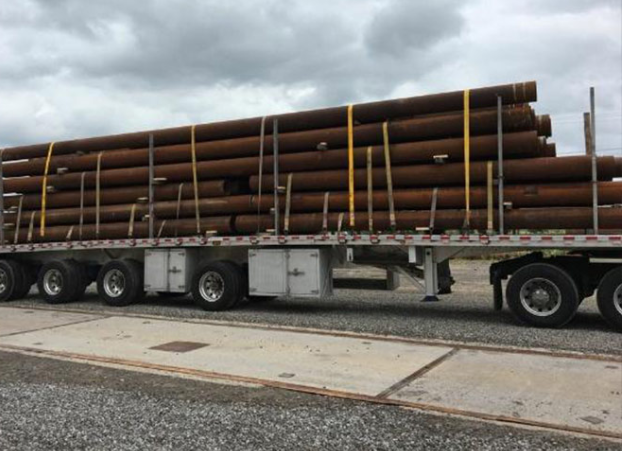When it comes to foundation construction, especially for heavy-duty infrastructure projects, H-piles are one of the most reliable and widely used solutions. Their strength, versatility, and ability to transfer loads deep into the ground make them ideal for everything from bridge supports and high-rise foundations to marine structures and industrial sites.
If you’re planning to H piles for a construction project, it’s important to understand what they are, how they’re used, and what factors to consider when selecting the right type and supplier. This article provides a complete guide to help you make informed purchasing decisions.
What Are H-Piles?
H-piles are long, steel structural elements with an “H” cross-section. Unlike round or square piles, H-piles are specifically designed to be driven into the ground using pile-driving equipment to transfer structural loads to deeper, more stable soil layers or bedrock.
H-piles are especially effective in dense soil conditions where high bearing capacity is needed. They are commonly used in:
- Building and bridge foundations
- Retaining walls
- Marine and waterfront structures
- Industrial plant support systems
- Temporary shoring and bracing
The “H” shape allows for efficient penetration into the ground and excellent load-bearing characteristics, both vertically and laterally.
Advantages of H-Piles
Before you buy H-piles, it’s worth understanding their key benefits:
1. High Load-Bearing Capacity
Due to their strong steel composition and shape, H-piles can carry extremely heavy loads, making them suitable for demanding structural applications.
2. Versatility
H-piles can be used in a variety of soil conditions and project types. They are available in multiple sizes and lengths to suit specific engineering needs.
3. Ease of Splicing
One advantage of steel piles over precast concrete piles is the ability to splice them easily using welding or mechanical connectors, allowing them to reach great depths without interruption.
4. Reusability
In temporary applications such as shoring or excavation support, H-piles can be extracted and reused on other projects, which adds economic value.
5. Durability
With proper coatings or corrosion protection, steel H-piles can last for decades even in harsh environmental conditions, including saltwater or contaminated soils.
Common Sizes and Grades
H-piles come in standard sizes such as:
- HP8x36
- HP10x42
- HP12x63
- HP14x89
- HP14x117
The number indicates the approximate web depth in inches and weight in pounds per foot. For example, an HP12x63 is roughly 12 inches deep and weighs 63 pounds per foot.
Material grades vary depending on structural requirements. Common grades include:
- ASTM A572 Grade 50
- ASTM A992
- ASTM A588 (for corrosion resistance)
When you buy H-piles, ensure the material grade aligns with your project’s load, design, and environmental requirements.
How to Select the Right H-Piles
When selecting H-piles for purchase, consider the following:
1. Load Requirements
Consult your structural engineer to determine the vertical and lateral load requirements of your project. This will help in selecting the proper size, weight, and steel grade.
2. Soil Conditions
Different soil types require different driving capabilities. For rocky or dense soil, heavier and stronger H-piles may be necessary.
3. Corrosion Exposure
If your project is in a marine or chemically aggressive environment, opt for coated or weathering steel H-piles such as ASTM A588.
4. Length and Splicing
Estimate the required pile length. If the length exceeds the manufacturer’s standard, choose a supplier that offers splicing or custom fabrication.
5. Delivery and Handling
Ensure that the supplier can deliver to your site on schedule. Heavy H-piles require special handling, lifting, and storage capabilities.
Where to Buy H-Piles
H-piles are available through:
1. Steel Fabricators and Mills
Buying directly from manufacturers may be more economical for large-scale projects. However, lead times can be longer.
2. Construction Supply Distributors
Local or regional distributors often keep standard sizes in stock and can provide faster delivery.
3. Online Steel Marketplaces
Web-based platforms offer easy comparison of prices, availability, and suppliers. This is especially helpful for small to mid-sized purchases.
4. Salvage or Reuse Yards
For temporary or budget-conscious applications, consider purchasing used H-piles that are still structurally sound.
Cost Considerations
The price of H-piles depends on:
- Steel market prices (fluctuate based on global demand)
- Size, length, and grade
- Quantity ordered
- Delivery location and logistics
As of recent market trends, new H-piles can cost anywhere from $2.00 to $4.00 per pound, depending on specifications. Always request a detailed quote including shipping, splicing, and surface treatments (if needed).
Conclusion
Buying H piles is a strategic investment in the foundation of your construction project. These durable and versatile structural members are critical for deep foundation systems and are available in a wide range of sizes, materials, and configurations. Whether you’re building a bridge, erecting a high-rise, or stabilizing a shoreline, understanding the specifications, sourcing options, and application methods of H-piles ensures that your project is grounded in quality, stability, and safety.
Always consult with engineers and reputable suppliers to ensure you’re choosing the best H-pile solution for your structural needs.

